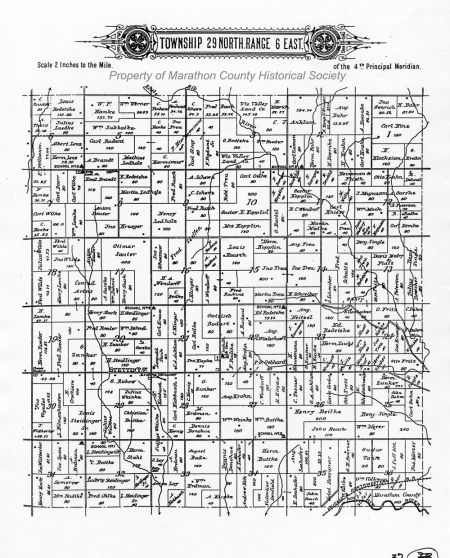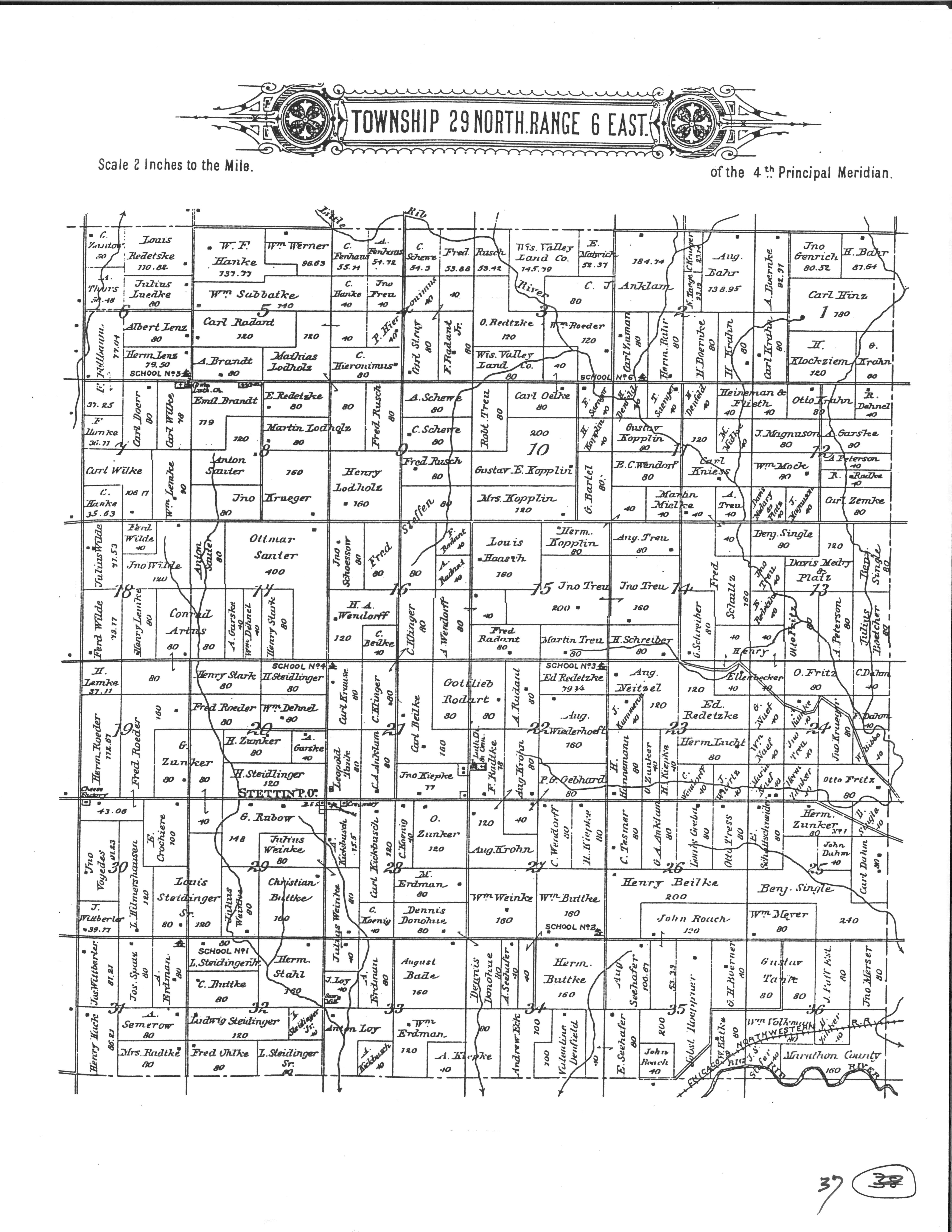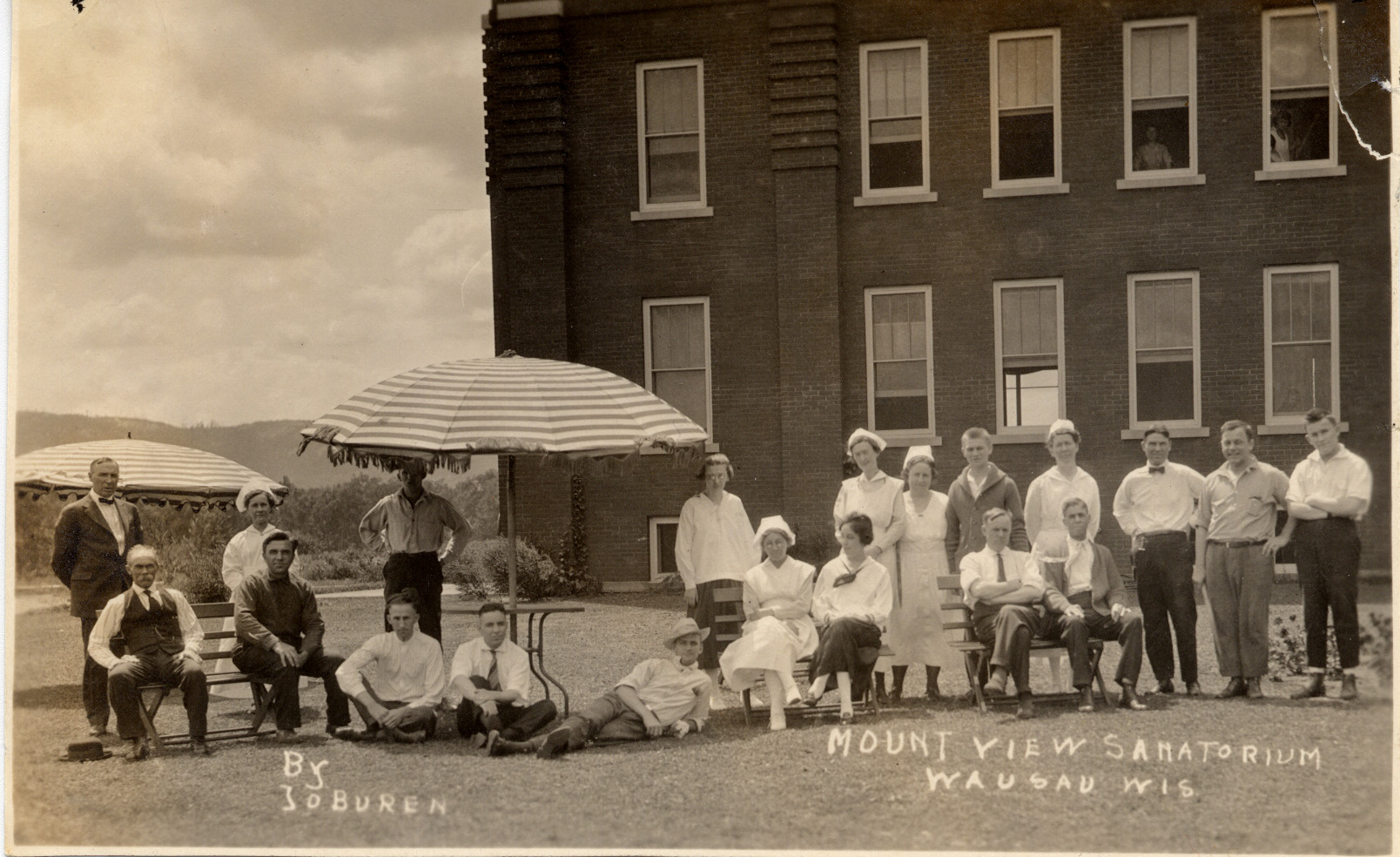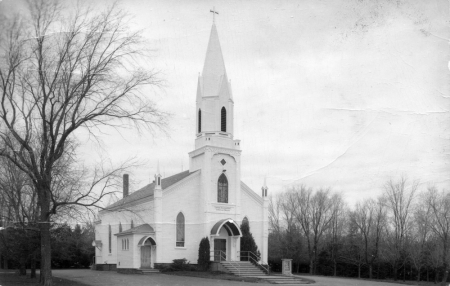Search our Places Database
Stettin, Township of
Return To List of Locations | Back to Search
For more information on this location, please contact our research library.

Author:
Mary Moltzan
Location:
T. 29 N. - R. 6 E. and T. 29 N. - R. 7 E., Sec. 23 - 36
Formallized:
1860
Background:
Population: 1905-1,112, 2000-2,191 plus part of City of Wausau.
The township reached its present size in 1892.
There appears to have been no permanent Native American village in Stettin, but this area was roamed by Native Americans before and after the settlers came. Beginning with fur traders and lumbermen and continuing with the settlers, the area changed. In 1856, the first farms were established in the township. German Immigrants converted forest to field and established permanent residence. According to one account, even after the Single mill was established for 11 years, hardly a dent had been made in harvesting the timber crop - such was the early settlers' challenge to clear the land and farm.
See Industries
For information on the City of Wausau, see City of Wausau
First Public Official:
Christian Buttke
Biography:
Chairman 1860-1862.
One of four brothers, Christian, his brothers, and cousins were among the first settlers who carved out farms in 1854.
Post Office Established:
September 8, 1864
First Postmaster:
Anton Maier
About The Post Office:
Located in the SW 1/4 Sect. 21, R. 6 E., this P.O. was discontinued on September 15, 1906 with service from Marathon. This was the only P.O. ever in the township.
Railroad:
The Chicago and NorthWestern Railroad ran through the southeastern part of the township on its way from Wausau to Marathon City.
Churches:
1. Trinity Evangelical Lutheran Church, founded on March 2, 1862. A frame church was built in 1885.
2. St. Mathews Catholic Church, organized in 1958.
3. Immanuel Lutheran Church, organized in March of 1861. The location was in the Towns of Berlin and Maine. A decision was reached in 1923 to relocate the original church, built in 1899, to Stettin Township . The church was dismantled and moved to the Town of Stettin.
4. Evangelical Lutheran Church
Schools:
In 1912, the township was divided into seven school districts:
#1, Spring Valley School, Section 31
#2, Rib View School, Section 27
#3, Spooner School, Section 22
#4, Vilas School, Section 21
#5, Mitchell School, Section 2
#7, Lone Pine School (also called Stettin School), Section 33
All the schools in the township were of the one room variety.
Industry:
Cheese factories
Sawmills
Benjamin Single built a water-powered sawmill in 1844 on the Little Rib River, 4 miles west of Wausau according to available descriptions. In 1851, Single abandoned the water-powered mill and built a new steam-powered mill nearby. He operated it until 1871 when it was destroyed by fire. Reports vary as to whether it was rebuilt, but one source states the mill was in use in 1881 and had been erected in the summer of 1873.
Farming:
John Artus is considered the first full-fledged farmer/settler in the township, arriving in 1856. Many of the early settlers worked in the Single sawmill part-time. A typical early farm included a log house, log barn and a little log pig pen with a straw roof. Stettin did not grow wheat in the early era like some of Wisconsin. As land was cleared, it was turned into pasture. As more land was cleared, permanent pastures and hay fields followed.
A cheese factory soon furnished the local market for milk and provided the surrounding farmers with a monthly cash income. One is shown in 1901 in Section 30.
Stories:
Hardship was common among the farm pioneers who immigrated to the Town of Stettin from Germany. In those days, there were no physicians within many miles and few roads to reach help. If the work of the men was hard, the life of pioneer women was harder still. They were real helpmates, assisting in clearing and piling underbrush for burning, sawing logs and helping with the planting and harvesting. They often took the littlest children, wrapped in comforters, with them out into the fields and attended to their needs during breaks in the field work.
Cattle and all domestic animals roamed freely, picking their food in the woods. After hay and straw gave out in the spring, animals grazed on fresh shoots and newly cut trees. It wasn't the best feed for milk cows, but it kept them alive.
Men and women wore home spun clothing, colored by boiling in the bark of hemlock trees or the shells of butternuts.





